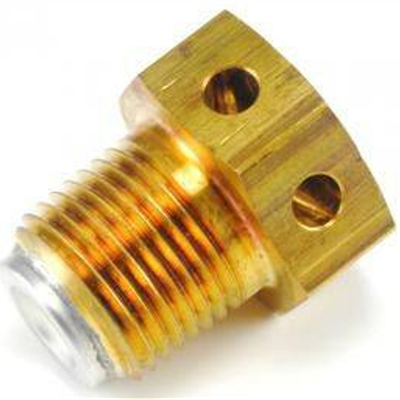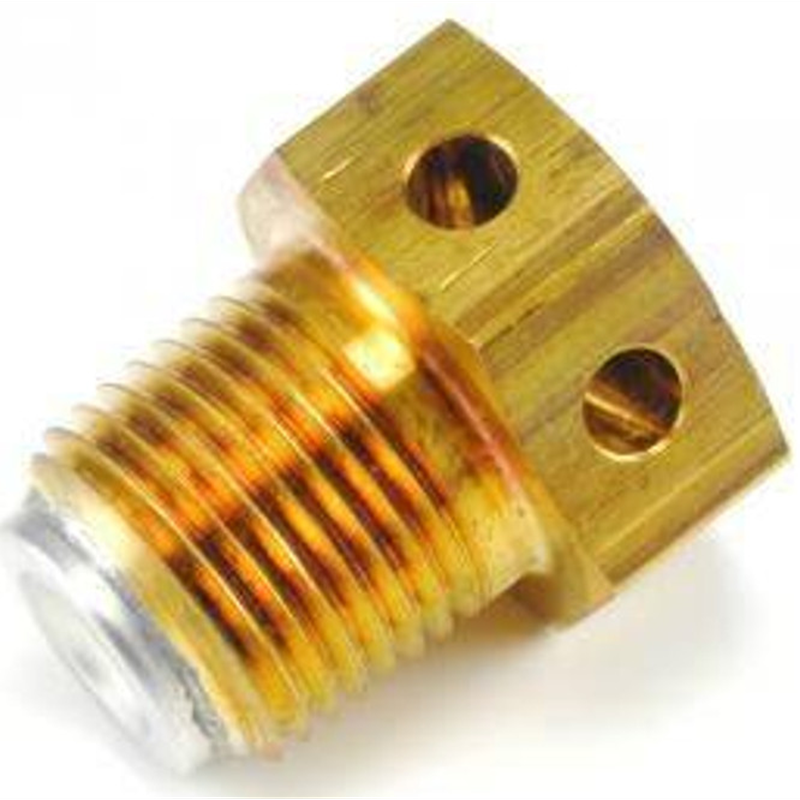Rupture Disk 6500psi 250deg.
Quick Overview
- rupture discs are pressure tight device designed to open by means of rupture at a pre-predetermined pressure value.
- rupture discs are safety devices ith the function of stopping suddn variations in pressure from damaging an industrial plant
- Max PSI: 6200 Max Temperature: 250 degrees F 1/2in MPT
Show More
$82.55
$94.10
Rupture/Burst Disk 6500psi 250deg.
Threaded: 1/2in. MPT
Relieves system pressure. Must be replace after being triggered. Protects expensive equipment.
Device releives pressure when systems reach 6200 PSI.
The internal disc will rupture protecting the equipment in the system by relieving the excess pressure.
Rupture discs are non-closing sacrificial parts, meaning the part needs replaced after being triggered.
Rupture discs are safety devices with the function of stopping sudden variations in pressure from damaging an industrial plant. They mainly consist of a thin membrane - which can be made of several different materials, depending on the exact situation – which is designed to break and open when the specific level of differential pressure rises above the resistance limit that the disc was originally calibrated for, so as to allow for the excess pressure to vent out safely.
Rupture discs are devices that perform the same basic function as safety valves. The main difference however being that they intervene as a result of the differential pressure to which they are subjected but then they cannot be re-closed (in fact, they must be replaced once opened).
Typically, bursting discs are devices composed of an assembly that also includes a special container called holder and, when necessary, other components such as: a vacuum or back pressure support, a reinforcement ring, a rupture indicator, etc.
Replaces part# Q02-0190-007
Replaces obsolete RD-6500 Rupture Disc.
Rated at 6,200 PSI and 250 Deg. F.


Proposition 65 requires businesses to provide warnings to Californians about significant exposures to chemicals that cause cancer, birth defects or other reproductive harm. These chemicals can be in the products that Californians purchase, in their homes or workplaces, or that are released into the environment. By requiring that this information be provided, Proposition 65 enables Californians to make informed decisions about their exposures to these chemicals. Proposition 65 also prohibits California businesses from knowingly discharging significant amounts of listed chemicals into sources of drinking water. Proposition 65 requires California to publish a list of chemicals known to cause cancer, birth defects or other reproductive harm. This list, which must be updated at least once a year, has grown to include approximately 900 chemicals since it was first published in 1987. Proposition 65 became law in November 1986, when California voters approved it by a 63-37 percent margin. The official name of Proposition 65 is the Safe Drinking Water and Toxic Enforcement Act of 1986.
The list of chemicals contains a wide range of naturally occurring and synthetic chemicals that include additives or ingredients in pesticides, common household products, food, drugs, dyes, or solvents. Listed chemicals may also be used in manufacturing and construction, or they may be byproducts of chemical processes, such as motor vehicle exhaust. For more information visit www.p65warnings.ca.gov/





